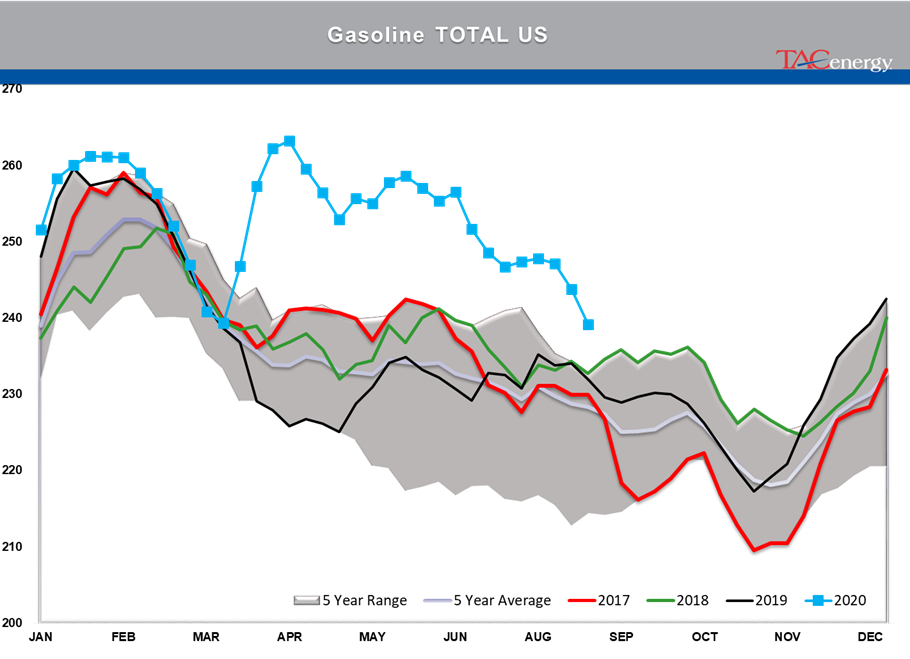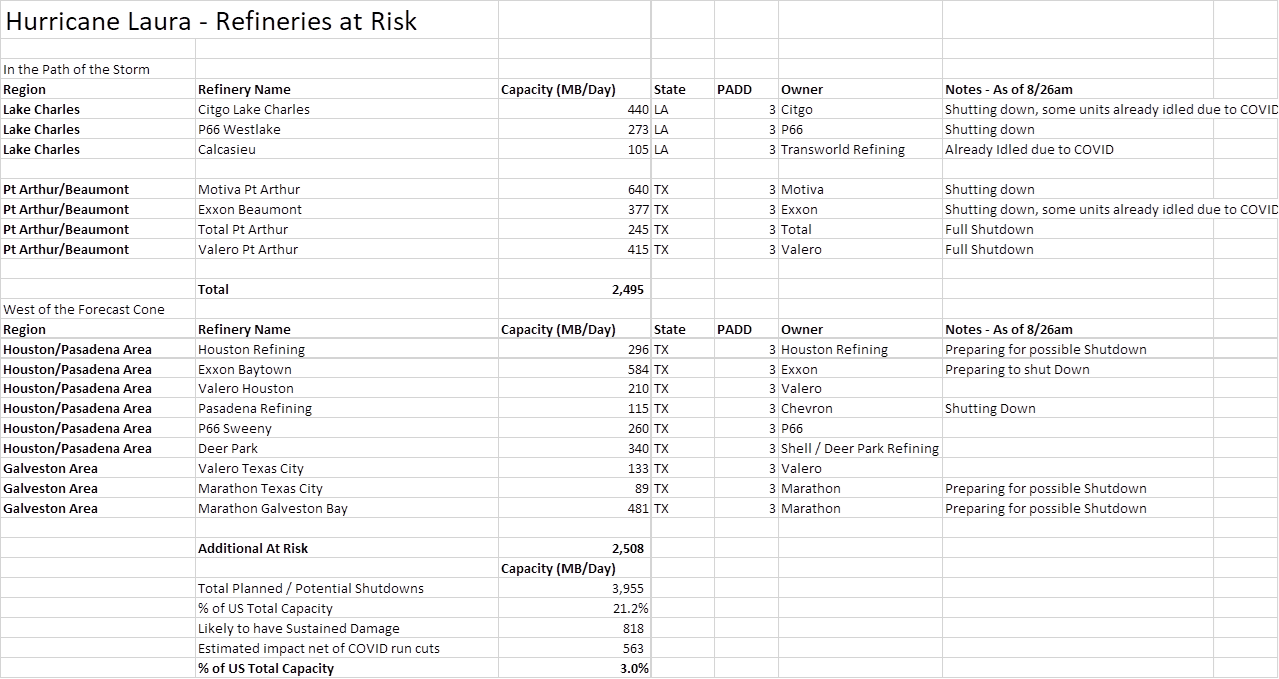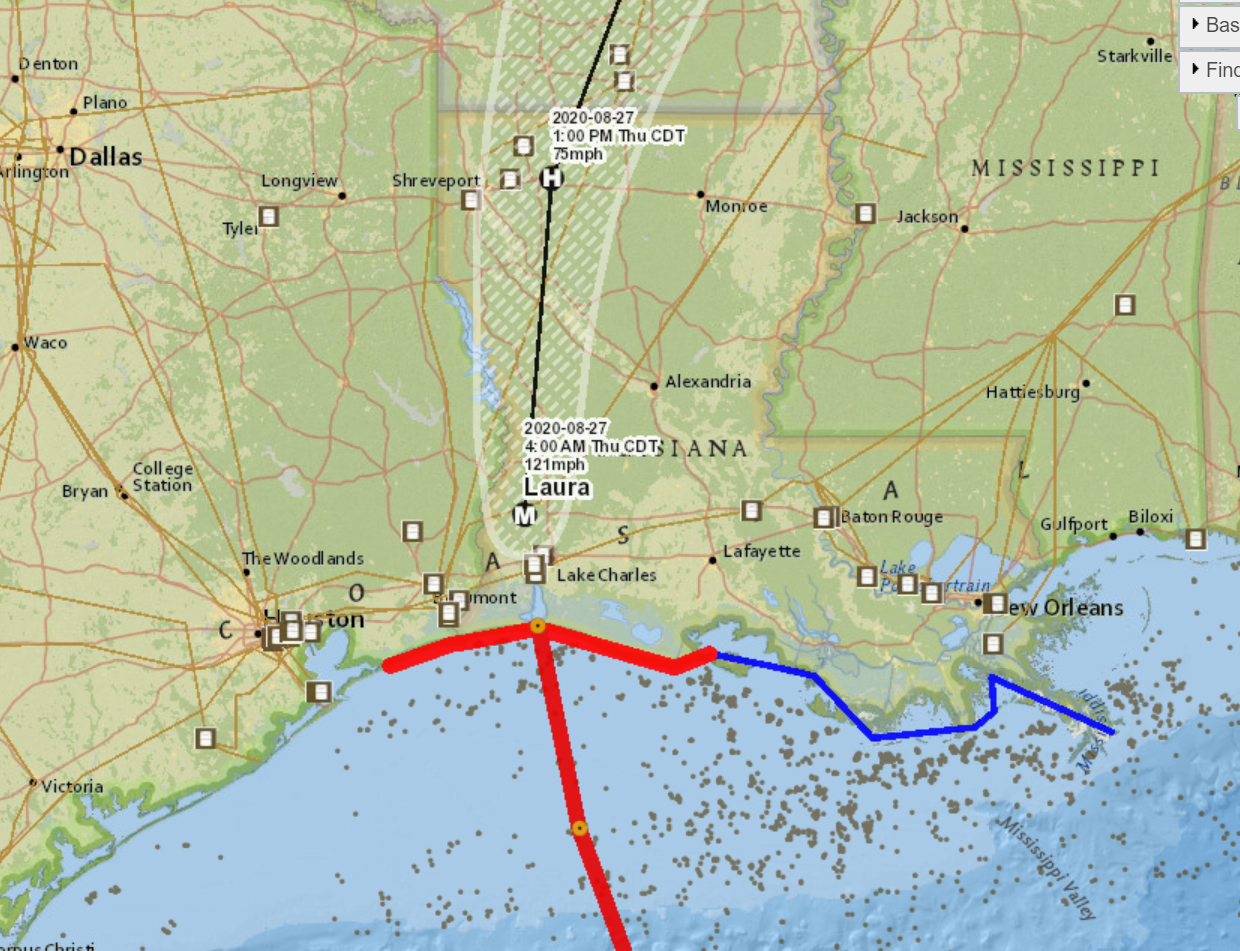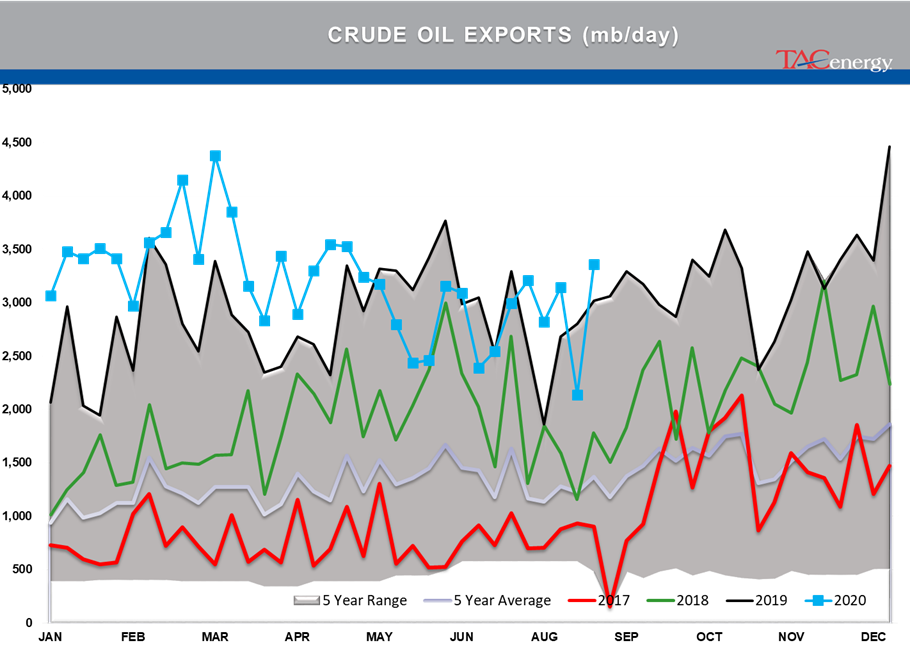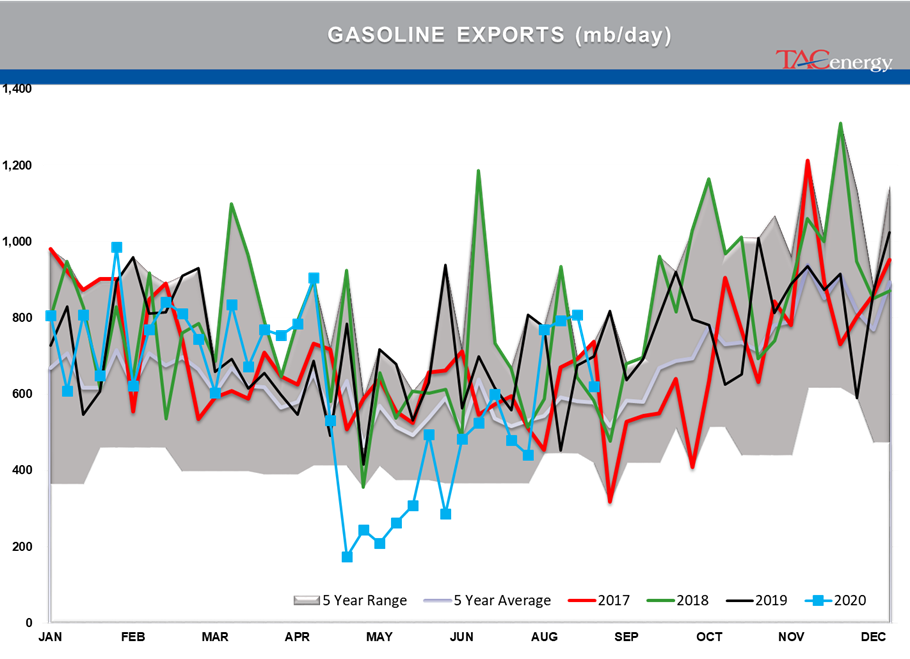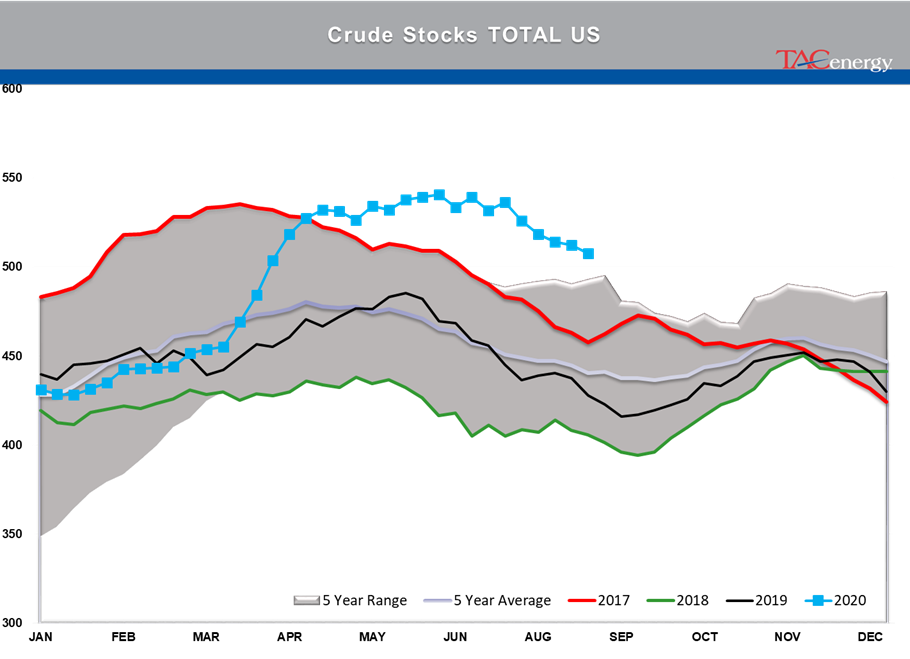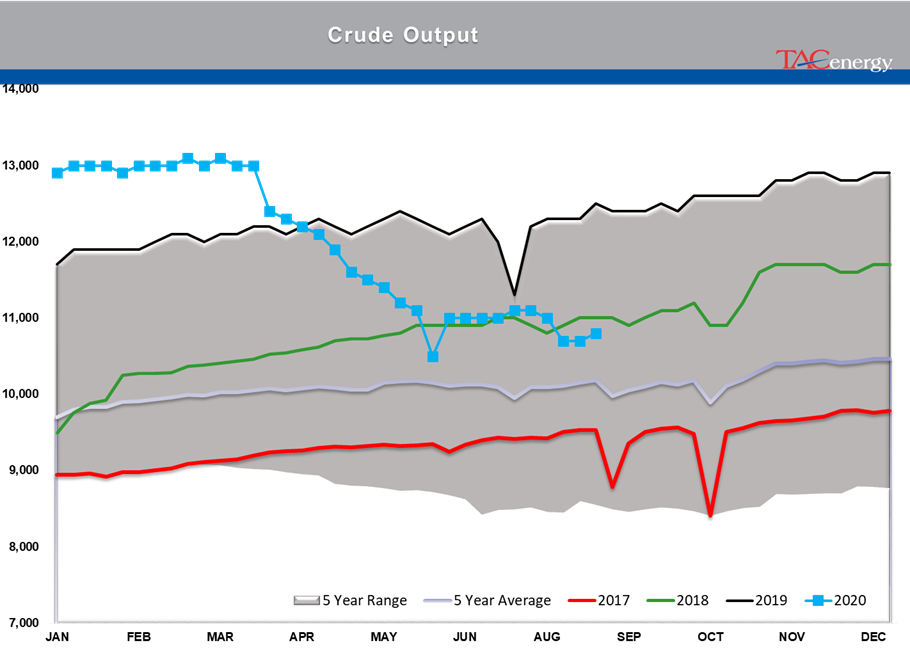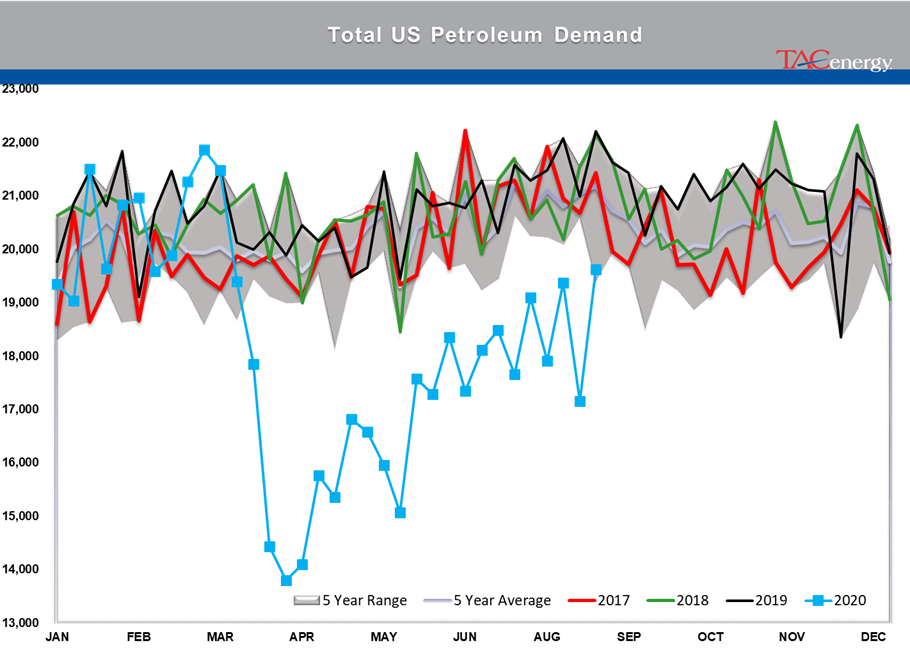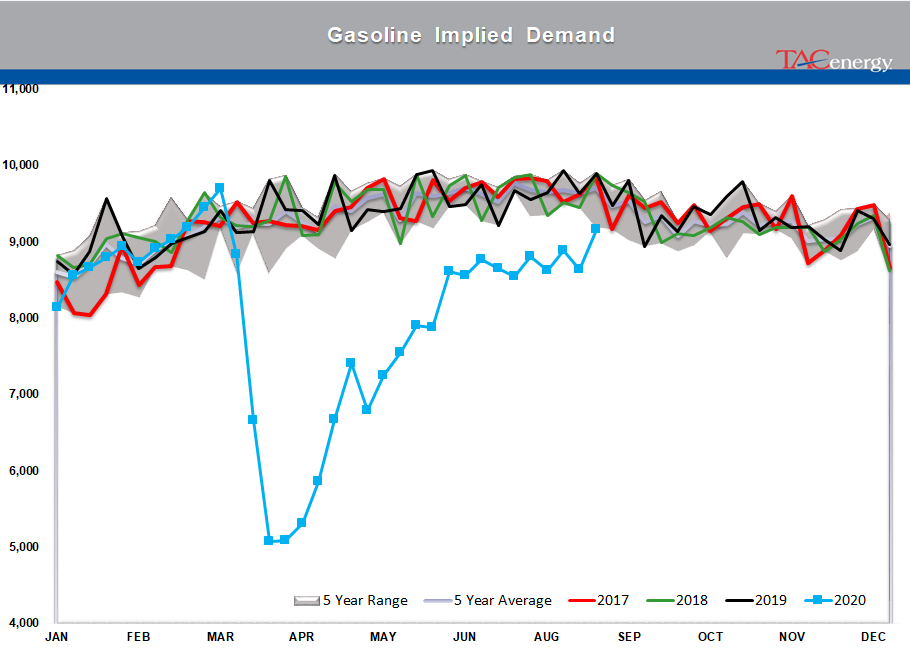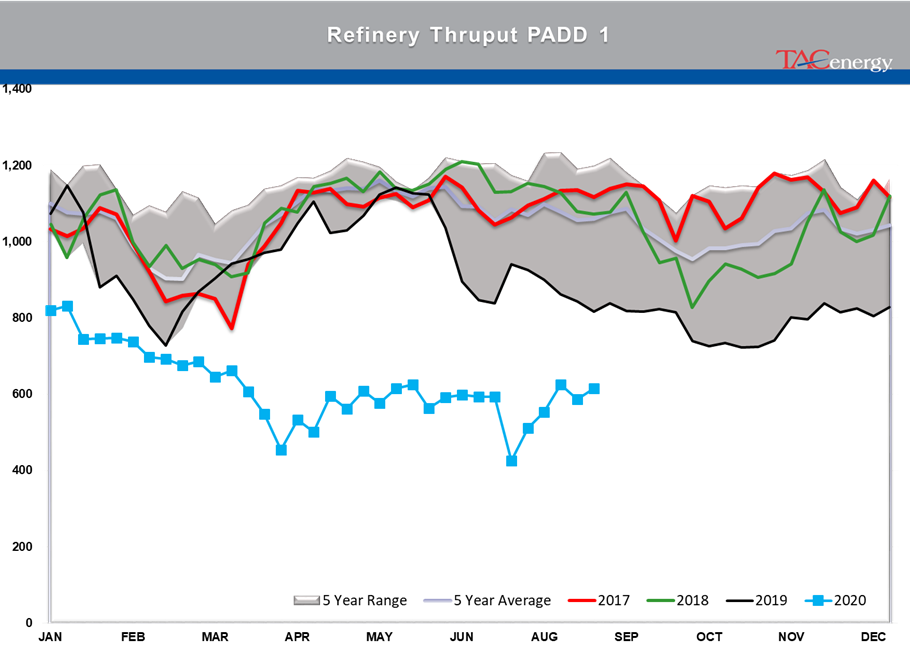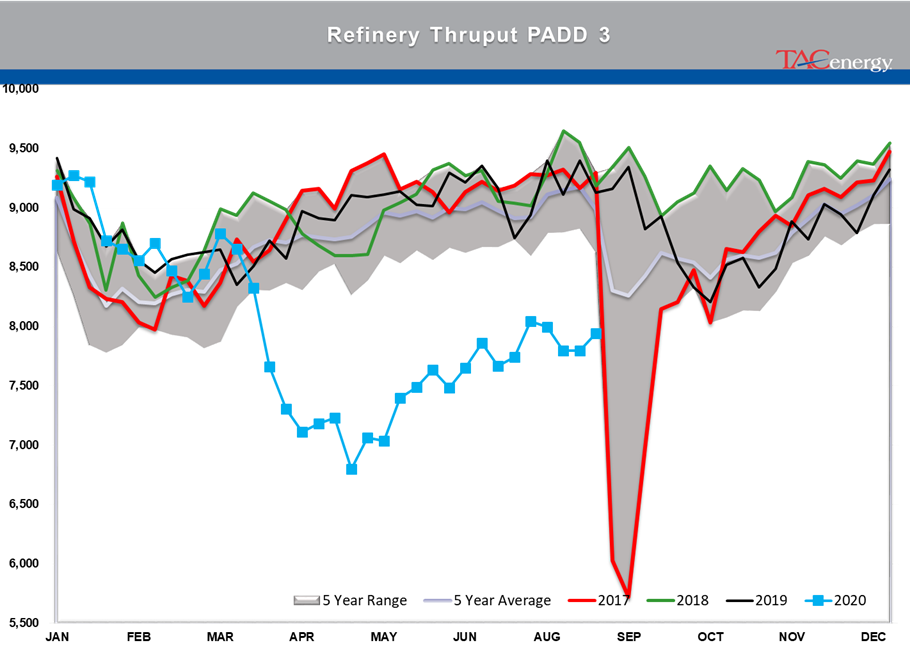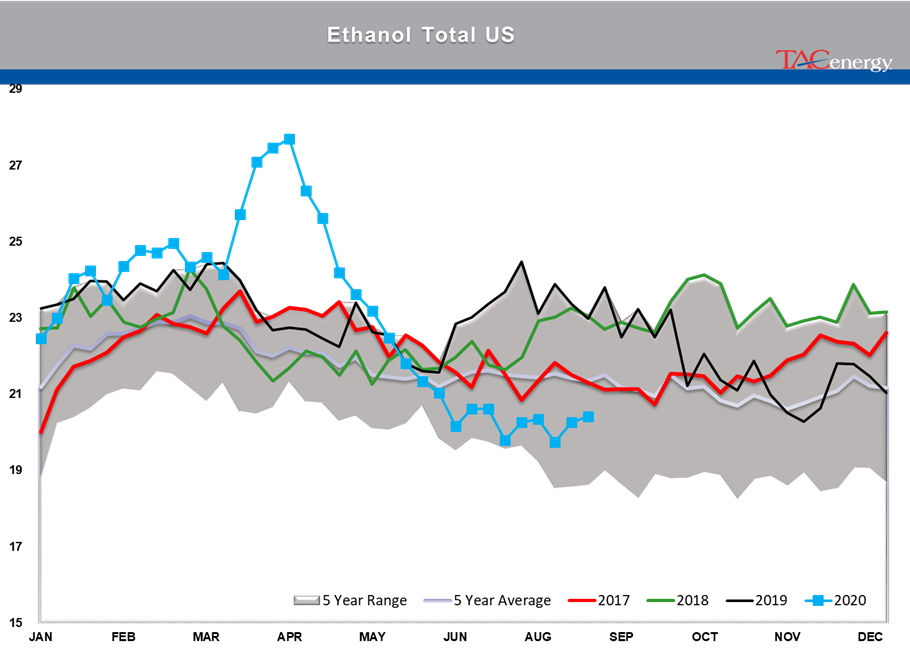Hurricane Shifts From The Heart Of Refining Country

Energy futures continue to retreat this morning as the strongest hurricane to hit the Gulf Coast in decades appears to have shifted just enough to the east to avoid damaging the heart of refining country. Equity futures are also pointed lower this morning as another weekly jobless claim report north of one million gives a dose of reality to indices that have reached record highs, despite the damage done to the economy by the COVID fallout.
Hurricane Laura made landfall overnight as a Category 4 storm, the strongest to hit the Louisiana coast in 168 years. Another shift to the east prior to landfall meant many gulf coast facilities look like they dodged most of the storms wrath, and some Houston-area terminals are already loading trucks this morning.
Unfortunately for the residents and refineries around Lake Charles, the storm did not appear to move far enough east for them to avoid a direct hit, although it’s too soon to say what damage may have been done to those facilities, but early reports from the city suggest substantial flooding and wind damage. One of three refineries around Lake Charles was already idled due to COVID-related demand destruction, and another was running well below normal rates, so it seems that in total we may only see roughly three percent of total U.S. refining capacity damaged by the storm, compared to estimates closer to 20 percent had the storm hit further west.
Although Lake Charles is an origin point along the Colonial pipeline, as long as the Houston/Pasadena and Port Arthur/Beaumont hubs weren’t damaged, we likely won’t see any major impact on pipeline deliveries. Explorer pipeline did shut down temporarily to allow the storm to pass, but it too may see limited impact thanks to the eastward shift of the storm since it originates from the Houston and Port Arthur hubs.
Now that the storm has passed by the majority of petroleum supply infrastructure, it may become a demand killer as it spreads flooding rains among large parts of the U.S. until re-emerging off the East Coast this weekend.
Yesterday’s DOE report was largely ignored due to the focus on the storm, but it did have some good news as demand estimates reached their highest levels since the start of COVID shutdowns, and in some cases demand has returned to the low end of the five year seasonal range.
Note the large declines in export volumes and refinery runs in September 2017 in the aftermath of Harvey (red line in the seasonal charts below) and you’ll get a good idea of what next week’s DOE report might look like due to the widespread shutdowns ahead of Laura’s landfall. The difference in the two storms so far is that more plants and ports shut ahead of the storm, which should mean a faster recovery when it moves past barring catastrophic damage.
Click here to download a PDF of today's TACenergy Market Talk.
News & Views
View All
Energy Futures Are Caught Up In Headline Tug-O-War This Morning
Energy futures are caught up in headline tug-o-war this morning with Canadian oil production concerns and a positive US GDP report trying to push prices higher while sinking Chinese demand worries and Gaza ceasefire hopes are applying downward pressure. The latter two seem to be favored more so far this morning with WTI and Brent crude oil futures down ~45 cents per barrel, while gasoline and diesel prices are down about half a cent and two cents, respectively.
No news is good news? Chicago gasoline prices dropped nearly 30 cents yesterday, despite there not being any update on Exxon’s Joliet refinery after further damage was discovered Wednesday. Its tough to say if traders have realized the supply situation isn’t as bad as originally thought or if this historically volatile market is just being itself (aka ‘Chicago being Chicago’).
The rain isn’t letting up along the Texas Gulf Coast today and is forecasted to carry on through the weekend. While much of the greater Houston area is under flood watch, only two refineries are within the (more serious) flood warning area: Marathon’s Galveston Bay and Valero’s Texas City refineries. However, notification that more work is needed at Phillip’s 66 Borger refinery (up in the panhandle) is the only filing we’ve seen come through the TECQ, so far.
Premiums over the tariff on Colonial’s Line 1 (aka linespace value) returned to zero yesterday, and actually traded in the negatives, after its extended run of positive values atypical of this time of year. Line 1’s counterpart, Line 2, which carries distillates from Houston to Greensboro NC, has traded at a discount so far this year, due to the healthy, if not over-, supply of diesel along the eastern seaboard.
Click here to download a PDF of today's TACenergy Market Talk.

WTI And Brent Crude Oil Futures Are Trading ~$1.50 Per Barrel Lower In Pre-Market Trading
The across-the-board drawdown in national energy stockpiles, as reported by the Department of Energy yesterday, stoked bullish sentiment Wednesday and prompt month gasoline, diesel, and crude oil futures published gains on the day. Those gains are being given back this morning.
The surprise rate cut by the People’s Bank of China is being blamed for the selling we are seeing in energy markets this morning. While the interest rate drop in both short- and medium-term loans won’t likely affect energy prices outright, the concern lies in the overall economic health of the world’s second largest economy and crude oil consumer. Prompt month WTI and Brent crude oil futures are trading ~$1.50 per barrel lower in pre-market trading, gasoline and diesel are following suit, shaving off .0400-.0450 per gallon.
Chicagoland RBOB has maintained its 60-cent premium over New York prices through this morning and shows no sign of coming down any time soon. Quite the opposite in fact: the storm damage, which knocked Exxon Mobil’s Joliet refinery offline on 7/15, seems to be more extensive than initially thought, potentially extending the repair time and pushing back the expected return date.
There are three main refineries that feed the Chicago market, the impact from one of them shutting down abruptly can be seen in the charts derived from aforementioned data published by the DOE. Refinery throughput in PADD 2 dropped 183,000 barrels per day, driving gasoline stockpiles in the area down to a new 5-year seasonal low.
While it seems all is quiet on the Atlantic front (for now), America’s Refineryland is forecasted to receive non-stop rain and thunderstorms for the next four days. While it may not be as dramatic as a hurricane, flooding and power outages can shut down refineries, and cities for that matter, all the same, as we learned from Beryl.

